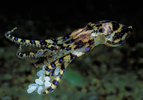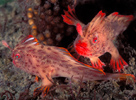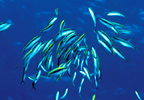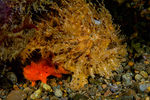David Hall's Encounters in the Sea Photography
Reproduction
Reproduction is an essential characteristic of all living things. Reproduction may be asexual, involving a single parent and resulting in genetically identical offspring. Or, it may be sexual, requiring two parents, each contributing a different set of genes, and resulting in offspring that are different from both parents.
There are many variations on the basic reproductive themes. Most hard corals can reproduce either sexually or asexually. Nudibranchs reproduce sexually, but are hermaphrodites, possessing both male and female reproductive organs at the same time. Some fish are born female and later become males, while some others do just the opposite. Some give birth to live young, while others lay eggs. Still others are "ovoviviparous", producing eggs that develop independently but hatch within the female's body. Seahorses are in a way ovoviviparous, except it is the male, not the female, that carries the fertilized eggs and eventually gives birth.
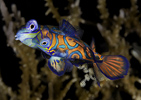

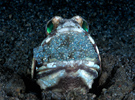
_98aa_sm.jpg)
_98bb_sm.jpg)



